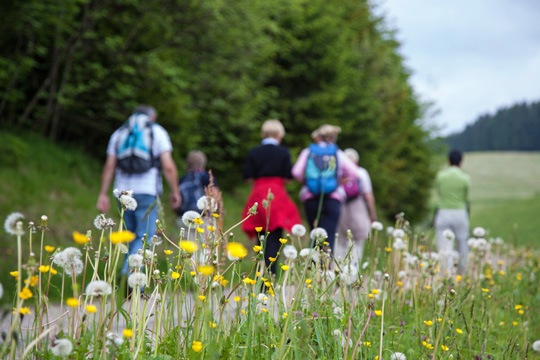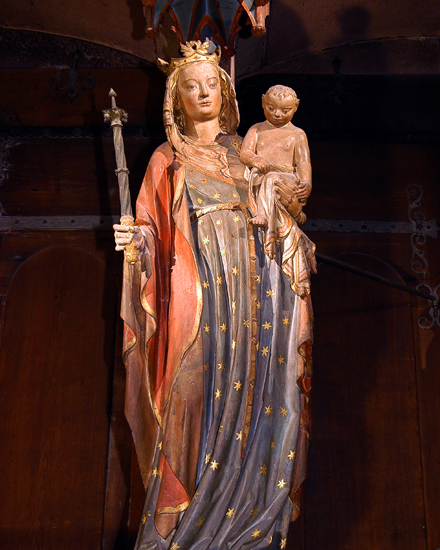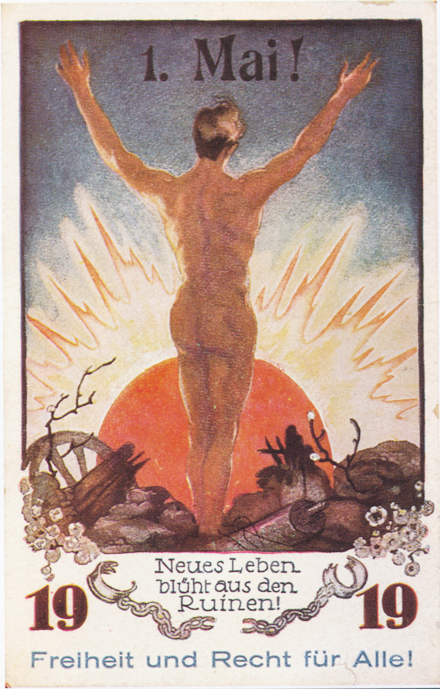May Renews Everything
Freiburg, Apr 25, 2018
The Acting Director of the Center for Popular Culture and Music (ZPKM) Dr. Dr. Michael Fischer looks at three distinct thematic areas – nature, religion and politics – in describing how song lyrics reflect spring as a symbol of new beginnings and a transition from chaos to order.

Photo: esuimages/Fotolia
Nature
Warbling larks and nightingales characterize songs that describe the nature of May. They’re all about sunlight, babbling brooks, broad fields and flowers – “... everything that’s typical for nature in springtime,” says Fischer. Also apparent are sensual experience, stirring spring feelings, and love:
Im wunderschönen Mai, (In magnificent May,)
Als alle Knospen sprangen, (As all blossoms were blooming,)
Da ist in meinem Herzen (There in my heart,)
Die Liebe aufgegangen. (Love flowered.)
Heinrich Heine (1827)
Self-awareness and nature's stirrings play a role in May song lyrics as well. According to Fischer, these needs could originate in alienation from the natural world. He says, “From rather citified and scholarly perspectives, lyrics tend to portray simple, country life in an idealized way.” Fischer continues, city dwellers get an urge to go for walks and hikes to experience the beauty of newly awakening nature:
Der Mai ist gekommen, die Bäume schlagen aus,
(May has come, the trees are blooming,)
da bleibe, wer Lust hat, mit Sorgen zuhaus;
(stay if you will, with your worries at home;)
wie die Wolken dort wandern am himmlischen Zelt,
(as the clouds wander across the vault of the heavenly sky,)
so steht auch mir der Sinn in die weite, weite Welt.
(so I long too for the wide, wide world.)
“Der Mai ist gekommen” (May has Come), Emanuel Geibel (1841)
Yet Fischer says it is not just a perspective remote from urban settings that has contributed to this positive portrayal of spring: “Spirits that have been lifted by warmth and natural light play an important role, too, but even into the 20th century, it was also about overcoming winter and surviving famines and sickness,” he adds.

Photo: Thomas Kunz
Religion
Judaism’s celebration of Passover marks the flight from bondage in Egypt. On Easter, Christians celebrate the resurrection, which represents victory over the power of death and sin. “Both holidays fall on the first full moon of spring and celebrations symbolize the history of salvation,” explains Fischer.
Among Christians the idea of “sacred May” existed into the early modern period. Salvation through Christ was directly connected to spring as symbolized by being born again and new life. Here the hawthorn represents Christ’s cross and the flowers symbolize virtues. The Easter celebration is interpreted as spring – the metaphysical renewal of creation. “Such parallels are described in detail in some of the songs,” reports Fischer. What is more, he says, the lyrics link spring and praise of God as the creator:
Wie lieblich ist der Maien (How sweet is May)
aus lauter Gottesgüt, (full of God’s grace,)
des sich die Menschen freuen, (which gives people joy)
weil alles grünt und blüht! (because everything greens and blooms!)
Die Tier sieht man jetzt springen (The beasts can be seen springing)
mit Lust auf grüner Weid, (across green meadows in lust,)
die Vöglein hört man singen, (the birds can be heard singing,)
die loben Gott mit Freud. (they praise God with joy.)
Martin Behm (1604)
During the 19th century, May was also linked to Mary, the mother of Jesus, and the tradition of May devotions was established. The “Mother of God” was celebrated and symbolized as a lily of the valley or “Queen of the May:”
Maria, Maienkönigin! Dich will der Mai begrüßen.
(Mary, Queen of the May! May wants to welcome you.)
O segne ihn mit holdem Sinn und uns zu deinen Füßen!
(Bless it with sweet grace as we kneel at your feet!)
Maria, wir empfehlen dir, was grünt und blüht auf Erden,
(Mary we recommend to you what greens and blooms on earth,)
lass uns in dieser Pracht und Zier das Werk des Schöpfers ehren.
(let us honor the work of the creator in this splendor and ornament.)
“Marienlieder zur Feier der Maiandacht” (Hymns to Mary for May devotion celebrations), Guido Görres (1842)

Source: Udo Achten: Wenn ihr nur einig seid. Texte, Bilder und Lieder zum 1. Mai. Cologne: Bund Verlag 1990, Page 63
Politics
“In political songs, spring is also a symbol for a desired, new beginning,” says Fischer. The history of celebrating May 1st, or May Day, dates back to a decision of the International Socialist Workers’ Congress of Paris in 1889. In the following year, political rallies were to be held on May 1st in a number of countries. More specifically, the celebration was to be dedicated to demanding that the eight-hour working day be made law.
At the end of the 19th century and the start of the 20th, May Day became established as a day on which workers frequently and demonstratively went on strike. Governments and employers reacted to the work stoppages with severe punishments and firings. “In the culture of song, this is brought across in militant but also ironic tones,” says Fischer.
Alles Frei *(May makes)
Macht der Mai – (everything free – )
Aber nicht die Polizei! (except the police!)
ihre Wut (their rage)
Steigt ins Blut, (stirs their blood,)
Wittert sie die rote Brut (as they catch the red brood's scent)
“Der wahre Jacob” (“The Real Jacob“, Satirical newspaper, 1912)
Holidays that were until then dedicated to worldly pleasures became connected to political rallies. “By demonstrating, workers symbolically occupied a space dominated by the bourgeoisie and shaped an opposing socialist public,” says Fischer. “Song lyrics tended to borrow from well-known bourgeois, patriotic tunes, such as the one below, which was sung to the melody of the song “Die Wacht am Rhein.”
Im schönen Mai, im jungen Mai, (In beautiful, young May,)
Erhebt der Arbeit Volk sich frei! (The working people rise in freedom!)
Es reicht die Hand zum Bruderbund, (They reach out a hand to brotherhood,)
Und tut der Welt sein Wollen kund. (And announce their demands to world.)
Hurraa, im schönen jungen Mai (Hurrah! In beautiful, young May)
"Sing mit. Eine Sammlung politischer Gewerkschaftlicher Kampflieder” *(Sing along. A Collection of Political Union Fighting Songs) (1908)
Sarah Schwarzkopf

